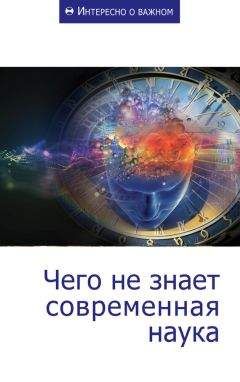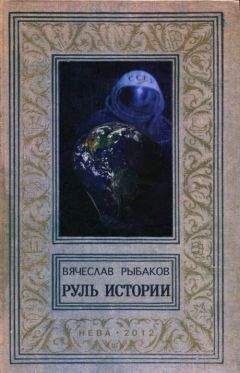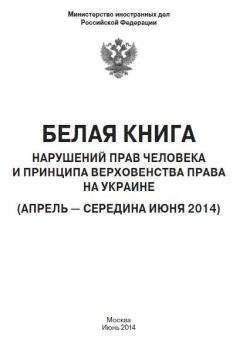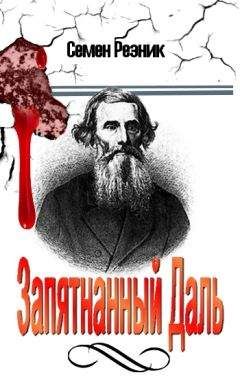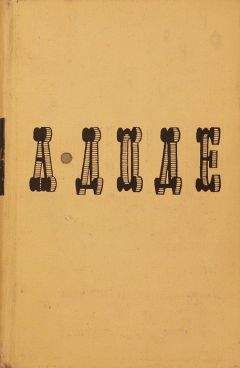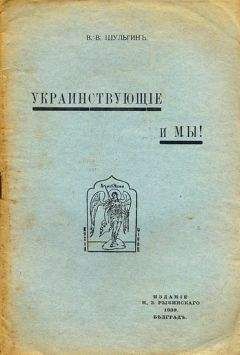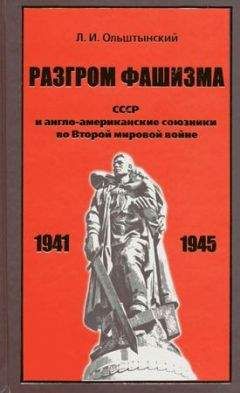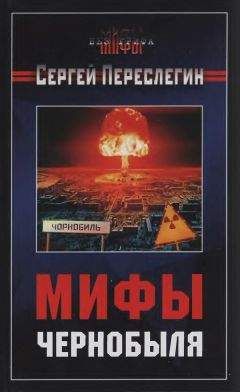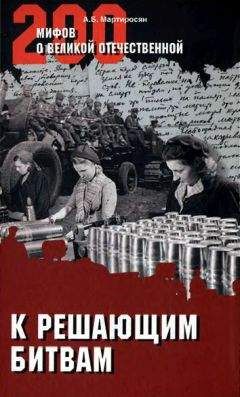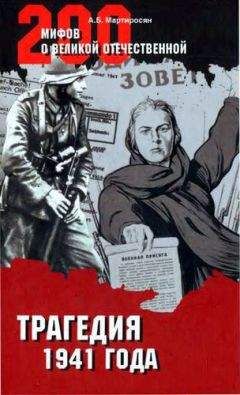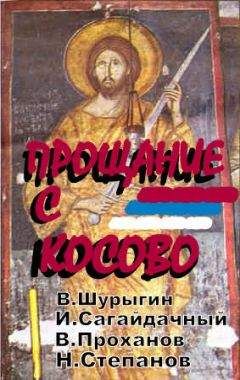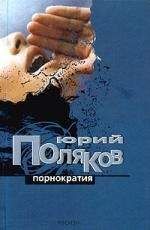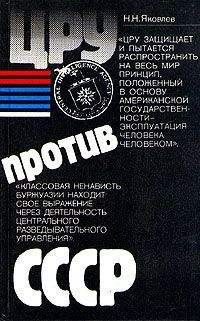Пер Рудлинг - ОУН и УПА: исследования о создании "исторических " мифов. Сборник статей

Скачивание начинается... Если скачивание не началось автоматически, пожалуйста нажмите на эту ссылку.
Жалоба
Напишите нам, и мы в срочном порядке примем меры.
Описание книги "ОУН и УПА: исследования о создании "исторических " мифов. Сборник статей"
Описание и краткое содержание "ОУН и УПА: исследования о создании "исторических " мифов. Сборник статей" читать бесплатно онлайн.
Сборник статей «ОУН и УПА: исследования о создании «исторических» мифов» является вторым изданием в серии «Историческая правда», основанной Международным антифашистским фронтом в 2011 году.
В издании представлены исследования современных западных ученых — Пера Андерса Рудлинга, Тимоти Д. Шнайдера, Гжегожа Россолинского-Либе на тему украинского радикального национализма, фашизма, создания антиисторических мифов вокруг ОУН-УПА, преступлений против человечности, попыток героизации и реабилитации этих организаций и их членов.
Большинство исследований в Украине публикуются впервые.
48
File of Mikhail Dmitrievich Stepaniak, HDA SBU, f. 6, d. 1510, tom 1, l. 67.
49
Mary Heimann, Czechoslovakia: The State That Failed (New Haven, Conn.: Yale University Press, 2009), 112.
50
Yeshayahu Jelinek, The Parish Republic: Hlinka’s Slovak People’s Party, 1939–1945, East European Monographs 14 (New York: Columbia University Press, 1976), 48. The anti-Semitic Slovak constitution, “Ústavnэ zákon zo d*a 21. Júla 1939 o ústave Slovenskej republiky,” is available online, on the website of the Slovak Nation’s Memory Institute: http://www.upn.gov.sk/data/pdf/ustava1939. pdf (accessed Dec. 30, 2008). Thanks to Nina Paulovicova for these references.
51
In Croatia, German support for Slovak statehood strengthened the pro-German wing of the Ustaše movement and signifi cantly increased its production of anti-Semitic propaganda material. On the racialist ideology of the Ustaše movement, see Tomislav Duli! Utopias of Nation: Local Mass Killing in Bosnia and Herzegovina, 1941–1942 (Uppsala: Acta Universitatis Upsalensis, 2005).
52
Heimann, Czechoslovakia,106–108; Serhii Yekelchyk, Ukraine: Birth of a Nation (Oxford: Oxford University Press, 2007), 131.
53
Mel’nyk assured von Ribbentrop that the OUN was “ideologically related to similar movements in Europe, in particular National Socialism in Germany and Fascism in Italy [weltanschaulich verwandt mit den gleichartigen Bewegungen Europas, insbesondere dem Nationalsozialismus in Deutschland und dem Fascismus in Italien].” Auswärtiges Amt Archive, PA AA, R 104430, Po. 26, No. 1m Pol. V. 4784, p. 2. Thanks to Ray Brandon for this reference.
54
The Ustaša “resurrection” of Croat statehood appears to have served as a model for the OUN. The proclamation was not delievered by Paveli! himself, but his deputy, (Doglavnik) Slavko Kvaternik. “People of Croatia! The providence of God, the will of our allies, the century-old struggle of the Croatian people, our self-sacrifi cing Leader [Poglavnik] Ante Paveli! and the Ustaša movement within and outside the country has decided that we today, on the eve of the resurrection of the son of God also will witness the resurrection of our Croatian state.” Kvaternik referred to “the will of our allies,” but without explicitly mentioning Hitler. Later that day, Kvaternik sent a telegram to Hitler, to thank him “in the name of the Croatian people for the protection the German army has given the Croat national rebellion and [to] request your recognition of the Independent State of Croatia by the Greater German Reich. Long live the Führer of the German people!” Zlo'ini Nezavisne Države Hrvatske, 1941–1945 (Belgrade: Vojnoistorijski institut, 1993), document 3 (the declaration) and 4 (the telegram). Thanks to Tomislav Duli! for this reference.
55
R. J. B. Bosworth, The Oxford Handbook of Fascism (Oxford: Oxford University Press, 2009), 431.
56
“Natsionalistychnyi rukh pid chas Druhoi Svitovoi Viiny: Interv’iu z B. Levyts’kym,” Diialoh: Za demokraiiu i sotsializm v samostiinii Ukraini, Vol. 2 (1979): 15.
57
Kul’chyts’kyi, OUN v 1941 rotsi (2006), 10. Similar attitudes were found in the OUN(b). In 1942, an OUN activist elaborated further on the size and scope of the Ukrainian state: “It will cover the lands from the Volga to the Carpathians, from the mountains of the Caucasus and the Black Sea to the sources of the Dnieper, a territory of one million square kilometers. This will be a deciding factor for the solution of the eastern problems in regards to Russia and the Baltic States, Poland, the Caucasus, the Black Sea states, and also the path to Africa and India through the Bosporus and the Dardanelles. Ukraine for the Ukrainians! This will be a Great United National State.” Derzhavnyi Arkhiv Rivenskoi oblasti, inv. nomer 326, cited in Vorontsov,“OUN-UPA,”10.
58
In 1938–1939, senior OUN functionary Colonel Roman Sushko toured Canada. According to the RCMP, Sushko “had adopted many of Hitler’s mannerisms when delivering speeches.” Sushko boasted that “the nationalist movement is so powerful that we will soon see the emergence of a Great Ukrainian State from the Caspian Sea to the Tatra Mountains.” Orest T. Martynowych, “Sympathy for the Devil: The Attitude of Ukrainian War Veterans in Canada to Nazi Germany and the Jews, 1933–1939,” in Rhonda L. Hinter and Jim Mochoruk, eds., Re-imagining Ukrainian Canadians: History, Politics, and Identity (Toronto: University of Toronto Press, 2011), 186. After the 1940 split, Sushko sided with the OUN(m). He was murdered in 1944, a murder his family attributes to the OUN(b). Myron B. Kuropas, “Who shot Col. Sushko?” The Ukrainian Weekly, March 1, 2009, 7.
59
See for instance Aristotle Kallis, Genocide and Fascism: The Eliminationist Drive in Fascist Europe (New York: Routledge, 2009), and Marius Turda, The Idea of Natonal Superiority in Central Europe, 1880–1918 (New York: Edwin Miller, 2005).
60
Mykola Stsibors’kyi, Natsiokratsiia (n.p.: Ukr. Vyd-vo “Proboiem,” 1942). For a discussion of natsiokratsiia, see Roman Dubasevych, “Ukraina abo smert’,” in Amar, Balyns’kyi, and Hrytsak, Strasti za Banderoiu, 17–36.
61
Rossolinski-Liebe, “The ‘Ukrainian National Revolution,’” 87.
62
For Romania, see Vladimir Solonari, Purifying the Nation: Population Exchange and Ethnic Cleansing in Nazi-Allied Romania (Washington D.C.: Johns Hopkins University Press, 2010). On Slovak minority policies, see Heimann, Czechoslovakia, 112; on Croatia, see Duli! Utopias of Nation.
63
Roman Shukhevych, leader of both the OUN(b) and the UPA, served in various Nazi German units from 1938 until 1943. He received training at the German Military Academy in Munich in 1938, in 1939–1940 he was joined by 120 other Ukrainian nationalists at a Gestapo training camp in Zakopane. Berkhoff, Harvest of Despair, 289, 298; Breitman and Goda, Hitler’s Shadow, 74, 91; Jeffrey Burds, The Early Cold War in Soviet West Ukraine, 1944–1948, Carl Beck Papers in Russian and East European Studies 1505 (Pittsburgh: University Center for Russian and East European Studies, 2001), 68.
64
Kul’chyts’kyi, OUN v 1941 rotsi (2006), 12 and 61, citing “Borot’ba i diial’nist’ OUN pid chas viiny: Politychni vkazivky (traven’ 1941 r.),” in OUN v svitlui povstanov Velykykh Zboriv, Konferentsii ta inshykh dokumentiv z borot’bi 1929–1955 r. [Zakordonni chastyny Orhanizatsii Ukrains’kykh Natsionalistiv] (1955), 48–57.
65
Tomasz Szarota, U progu Zaglady: Zajscia anty(ydowskie i pogromy w okupowanej Europie: Warszawa, Pary(, Antwerpia, Kowno (Warsaw: Wydawnictwo “Sic!” 2000), 210–214, and Peter Longereich with Dieter Pohl, ed., Die Ermordung der europäischen Juden: Eine umfassende Dokumentation des Holocaust 1941–1945 (Munich: Piper, 1989), 118–119. An analogous development also took part among profascist émigré groups in Germany. On March 19, 1941, they urged the Jews to leave Lithuania, so that “there would not be any unneccessary victims.” In Berlin on May 10, 1941, the so-called Lithuanian Activist Front (LAF) presented its völkisch ideological program, which accused the Jews collectively of having destroyed Lithuania and emphasized that “communism is directly rooted in Judaism.” Klaus-Peter Friedrich, “Spontane Volkspogrome oder Auswüchse der NSVernichtungspolitik?: Zur Kontroverse um die Radikalisierung der antijüdischen Gewalt im Sommer 1941,” Jewish History Quarterly (Kwartalnik Historii)ydów), no. 4 (2004): 591.
66
TsDAVO Ukrainy, f. 3833, op. 1, spr. 12, l. 10, Telegram Iaroslav Stest’ko no. 13, 25.6.1941.
67
“Instruktsii Revolutsiinoho Provodu OUN(B) dlia orhanizatsiinoho aktyvu v Ukraini na period viiny. “Borot’ba i diial’nist’ OUN pid chas viiny” V. Viis’kovi instruktsii,” TsDAVO Ukrainy, f. 3833, op. 2, spr. 1, ark. 25–33.
68
Ivan Patryliak, “Viiskovi plany OUN(B) u taemnii instruktsii Revoliutsiinoho provodu (traven’ 1941 r.) “Borot’ba i diial’nist’ OUN pid chas viiny,” Ukrains’kyi Istorychnyi Zhurnal’, no. 2 (2000): 136.
69
“Instruktsii Revoloiutsiinoho Provodu OUN(B) dlia orhanizatsiinoho aktyvu v Ukraini na period viiny. “Borot’ba i diialnist’ OUN pid chas viiny” H. Vkazivky na pershi dni orhanizatsii derzhavnoho zhyttia,” TsDAVO Ukrainy, f. 3833, op. 2, spr. 1, ark. 33–57.
70
Berndt Boll, “Z" oczów, July 1941: The Wehrmacht and the Beginning of the Holocaust in Galicia: From a Criticism of Photographs to a Revision of the Past,” in Omer Bartov, Atina Grossmann, and Mary Nolan, eds., Crimes of War: Guilt and Denial in the Twentieth Century (New York: The New Press, 2002), 73.
71
Hannes Heer, “Einübung in den Holocaust: Lemberg Juni/juli 1941” Zeitschrift für Geschichtswissenschaft Vol. 49, 5 (2001): 409–417; Israel Gutman, “Nachtigall Battalion,” Encyclopedia of the Holocaust (New York: Macmillan, 1990).
72
“Ukrains’kyi narode!” OUN(b) fl yer, July 1, 1941, TsDAVO Ukrainy, f. 3833, op. 1, spr. 42, l. 35. See also Dieter Pohl, Nationalsozialistische Judenverfolgung in Ostgalizien 1941–1944: Organization und Durchführung eines staatlichen Massenverbrechens, 2d ed. (Munich: Verlag Oldenburg, 1997), 57.
73
Kul’chyts’kyi, OUN v 1941 rotsi (2006), 11; Himka, “Central European Diaspora,”19.
74
Berkhoff and Carynnyk, “The Organization of Ukrainian Nationalists,” 150.
75
Volodymyr Serhiichuk, ed., OUN-UPA v roky viiny: novi dokumenty i materialy (Kyiv: Vydavnytstvo khudozhnoi literatury “Dnipro,” 1996), 239.
76
Rossoli#ski-Liebe, “The ‘Ukrainian National Revolution’ of 1941,” 99, citing TsDAVO Ukrainy, f. 3833, op. 1, spr. 22, ll. 1–27.
77
Gabriel N. Finder and Alexaner V. Prusin, “Collaboration in Eastern Galicia: The Ukrainian Police and the Holocaust,” East European Jewish Affairs, 34, no. 2 (2004): 102; Berkhoff and Carynnyk, “The Organization of Ukrainian Nationalists,” 171.
78
Rossolinski-Liebe, “The ‘Ukrainian National Revolution’ of 1941,” 100. Similar attitudes were found within the OUN(m). Its organ Selians’ka dolia described the Jews as enemies, who “had to leave the land or die on it. The Muscovite, the Pole, and the Jew were, are, and will always be your enemies.” Amir Weiner, Making Sense of War: The Second World War and the Fate of the Bolshevik Revolution (Princeton, N.J.: Princeton University Press, 2001), 242–243, citing TsDAHO Ukrainy, f. 57, op. 4, d. 369, l. 63.
79
Heer, “Blutige Ouvertüre”; Kai Struve, “Layers of Violence: Mass Executions and Pogroms against Jews in Eastern Galicia in Summer 1941,” paper presented at the Fifth Annual Danyliw Research Seminar on Contemporary Ukrainian Studies, University of Ottawa, October 30, 2009.
80
John-Paul Himka, “The Lviv Pogrom of 1941,” paper presented at the Association for the Study of Nationalities, the Harriman Institute, Columbia University, 16 April 2011.
81
Bruder, “Den ukrainischen Staat,” 146, citing Pohl, Nationalsozialistische Judenverfolgung, 60 ff.; Text des Amtes Ausland/Abwehr vom Juli, 1941, IfZ, Fd 47, Bl. 47, Bl. 41; Ic/AO vom 2.7.1941, BArch-MA, RH 20–17/277, Bl. 91, 126 and 137.
82
On the pogroms, see Marco Carynnyk, Furious Angels: Ukrainians, Jews, and Poles in the Summer of 1941 (forthcoming); on the pogroms in Dubne, see idem, “The Palace on the Ikva: Dubne, September 18th, 1939 and June 24th, 1941,” in Elazar Barkan, Elizabeth A. Cole, Kai Struve, eds., Shared History — Divided Memory: Jews and Others in Soviet-Occupied Poland, 1939–1941 (Leipzig: Leipziger Universitätsverlag, 2007; Band V of Leipziger Beiträge zur Jüdischen Geschichte und Kultur), 263–301; on Zolochiv, see idem, “Zolochiv movchyt,” Krytyka, no. 10 (2005): 14–17, on Lviv, see Himka, “Lviv Pogrom”; on Ivano-Frankivs’k, see Abraham Liebesman, During the Russian Administration: With the Jews of Stanis!awow During the Holocaust (Atlanta: n.p. 1990), 2–6; Joachim Nachbar, Endure, Defy, and Remember: Memoirs of a Holocaust Survivior (Southfi eld, Mich.: J. Nachbar, c2003), 7–9; on Drohobych, see Bernard Mayer, Entombed: My True Story: How Forty- Five Jews Lived Underground and Survived the Holocaust (Ojus, Fla.: Aleric Press, c1994), 7–16; on Borylaw, Sabina Wolanski with Diana Bagnall, Destined to Live: One Woman’s War, Life, Loves Remembered (London: Fourth Estate, 2008), 31–35; on Kuty, see Abraham Klein, My Life in Kuty: A shtetl destroyed (Montreal: A. Klein, 2003), 126–128. Thanks to John-Paul Himka for these references.
83
Dieter Pohl, “Anti-Jewish Pogroms in Western Ukraine: A Research Agenda,” in Barkan, Cole, and Struve, eds. Shared History— Divided Memory, 305–315.
84
Viktor Khar’kiv “Khmara,” a member of both Nachtigall and then Schutzmannschaft battalion 201, wrote in his diary that he participated in the shooting of Jews in two villages in the vicinity of Vinnytsia. TsDAVO Ukrainy, f. 3833, op. 1, spr. 57, ark. 17–18.
85
Bruder, “Den ukrainischen Staat,” 147.
86
Alexander Dallin, German Rule in Russia, 1941–1945: A Study of Occupation Policies, 2d ed. (Boulder, Colo.: 1981), passim.
Подписывайтесь на наши страницы в социальных сетях.
Будьте в курсе последних книжных новинок, комментируйте, обсуждайте. Мы ждём Вас!
Похожие книги на "ОУН и УПА: исследования о создании "исторических " мифов. Сборник статей"
Книги похожие на "ОУН и УПА: исследования о создании "исторических " мифов. Сборник статей" читать онлайн или скачать бесплатно полные версии.
Мы рекомендуем Вам зарегистрироваться либо войти на сайт под своим именем.
Отзывы о "Пер Рудлинг - ОУН и УПА: исследования о создании "исторических " мифов. Сборник статей"
Отзывы читателей о книге "ОУН и УПА: исследования о создании "исторических " мифов. Сборник статей", комментарии и мнения людей о произведении.





